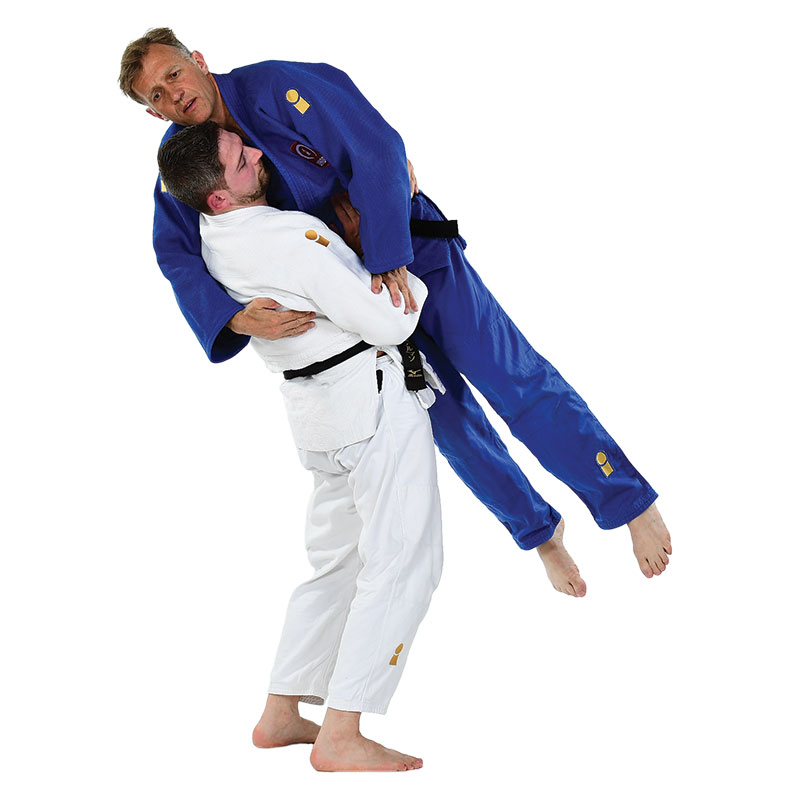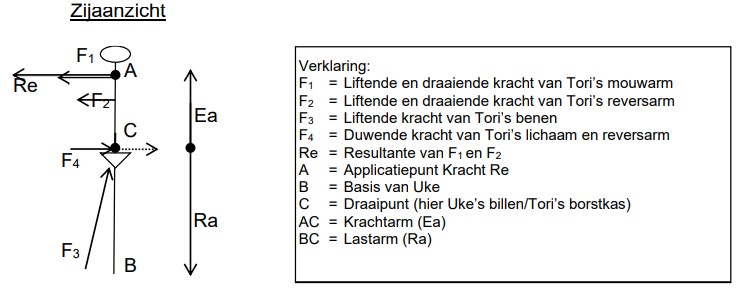Ura-nage 裏投 (“Rear Throw”)
Category: Ma-sutemi-waza (rear sacrifice technique)
Translation: “Ura” means “rear” or “reverse”, and “nage” means “throw” — thus, rear throw.
Description
Ura-nage is a powerful counter technique executed when uke attacks with a forward throw, especially an inward rotation (e.g. seoi-nage or koshi-waza). Tori wraps both arms tightly around uke’s waist from the side or rear, pulls uke inward, then lifts and throws him backwards over the shoulder by falling into a backward arc.
Unlike ushiro-goshi, where uke is thrown directly behind, ura-nage rotates uke over the shoulder or side, making it more rotational and dynamic in nature.

Biomechanics of Ura-nage
-
Type: Lever throw
-
Support point (C): Located at tori’s hips or back, under uke’s center of gravity.
-
Force vectors:
-
F3: Legs and hips drive uke vertically into the air.
-
F4: Arms wrap around uke’s waist and maintain tight control.
-
F1/F2: The body leans backward to initiate the throw.
-
-
The throw includes a centrifugal component, as uke’s momentum is carried in an arc over tori’s shoulder.

Did you know?
-
Ura-nage is one of the most iconic counter throws in judo — often referred to as the “ultimate counter.”
-
It is widely used in wrestling as well, where it’s known under names like suplex or belly-to-back throw. The lifting motion is similar, but judo emphasises control, precision, and safety.
-
In judo history, Ura-nage gained prominence after leg grabs were banned, since it provides an effective counter to classic forward throws without needing to touch the legs.
-
Judoka Kosei Inoue, Olympic and World Champion, was known for using ura-nage-style countering movements with explosive lift and control.
Nice to know:
The term “ura” (裏) doesn’t just mean “back” — it can also be interpreted as the hidden or reverse side of something in Japanese culture. Fittingly, Ura-nage reveals the hidden strength in defence, showing that even when attacked, a judoka can reverse the tide in a single, powerful arc.